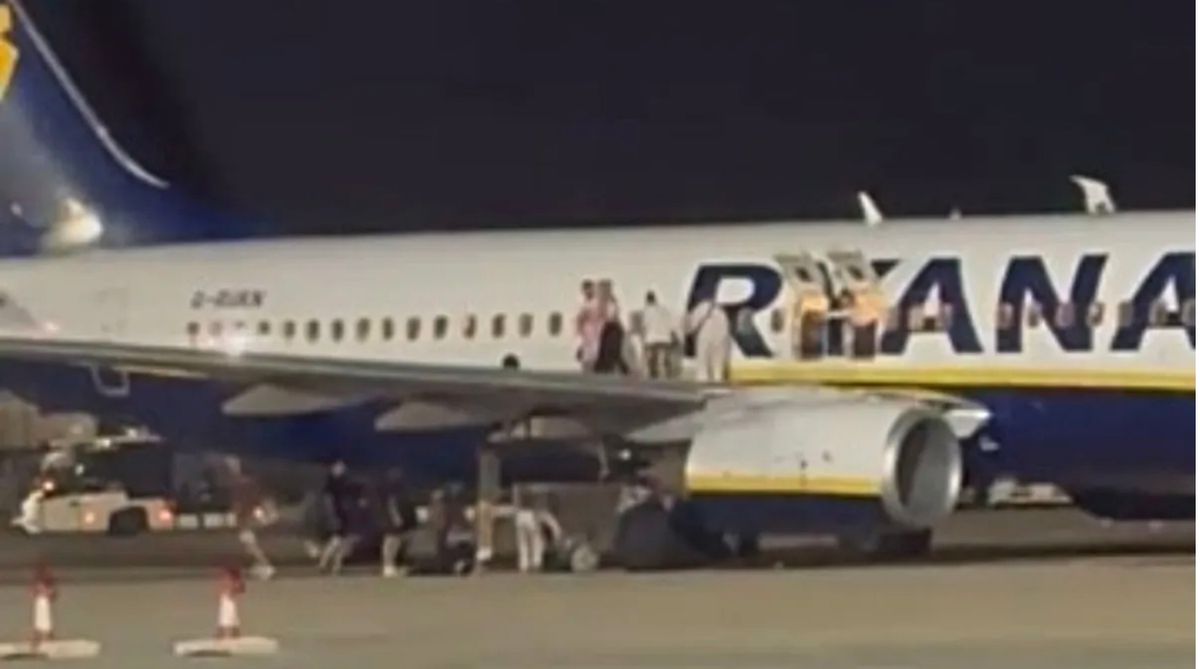False fire warning raises Ryanir safety procedure concerns
05 July, 2025
3 min read
By joining our newsletter, you agree to our Privacy Policy


Eighteen passengers were mildly injured in a dramatic evacuation after a false fire alarm triggered chaos aboard a Ryanair flight waiting to depart Palma de Mallorca Airport early Saturday morning. The resultant panic has placed Ryanair’s procedures under the spotlight according to AirlineRatings CEO, Sharon Petersen
The UK-bound aircraft was still on the tarmac when the alarm sounded shortly after midnight, prompting frightened passengers to flee—some even leaping from the aircraft’s wings onto the runway, according to EuroWeekly.
Ryanair confirmed the incident in a statement, saying:
“A flight from Palma to Manchester discontinued take-off due to a false fire warning light indication. Passengers were disembarked using the inflatable slides and returned to the terminal. While disembarking, a small number of passengers encountered very minor injuries (ankle sprains, etc.) and crew requested immediate medical assistance. To minimise disruption to passengers, we quickly arranged a replacement aircraft to operate this flight, which departed Palma at 07:05 this morning. We sincerely apologise to affected passengers for any inconvenience caused.”
Petersen commented:
“While we’re still waiting for the full details, from what we’ve seen so far, this appears to have been a poorly managed evacuation. The fact that passengers were jumping from the wings suggests a high level of panic and a breakdown of order within the cabin—particularly concerning given this was a false alarm, not an actual fire.If this had occurred during a standard evacuation and safety procedures audit, it would likely have resulted in a fail. Ryanair has a strong and longstanding safety record, but this incident raises valid concerns about how a truly life-threatening situation might be handled. It’s something we will take into account in our upcoming safety assessments.”
Commercial aircraft are required by international aviation regulations to carry a minimum number of cabin crew based on the number of passenger seats, not the number of exits.
The standard cabin crew-to-passenger ratio under most aviation authorities (including EASA, FAA, and CASA) is one cabin crew member per 50 passenger seats.
So, for example:
A Boeing 737 with 189 seats requires at least four cabin crew members.
A widebody like the Boeing 777 with 350 seats typically requires seven or more.
This means:
Not all exits will be manned during an emergency—only the primary ones allocated to the available cabin crew.
Some doors may remain closed or become inaccessible depending on the situation (e.g., fire, smoke, blocked tarmac).
The crew is trained to direct passengers to the nearest usable exit, whether or not it’s their assigned door.
In some incidents, including the recent Ryanair fire scare, passengers have taken it upon themselves to use overwing exits or even jump from wings—actions which can lead to injuries and undermine coordinated evacuation protocols.
Six people were hospitalised with injuries, while another 12 received treatment at the scene, Majorca Daily Bulletin reported.
Get the latest news and updates straight to your inbox
No spam, no hassle, no fuss, just airline news direct to you.
By joining our newsletter, you agree to our Privacy Policy
Find us on social media
Comments
No comments yet, be the first to write one.

